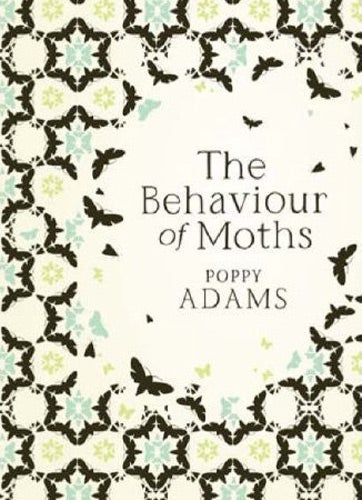The Behaviour of Moths, By Poppy Adams
Memories flit around this Gothic pile like moths around a flame

This is a tall tale from every perspective. High in a Gothic mansion lives a narrator-heroine of surpassing strangeness. All her life, reclusive lepidopterist Virginia Stone has inhabited Bulbarrow Court in Dorset, "a vast Victorian folly" concealing curious family secrets even from herself.
As Ginnie – now grey-haired, arthritic and delusional – watches her younger sister, Vivi, come home after half a century's absence, memories surface: nasty, poisonous and mostly mendacious. The intense ambivalence of sister-love is the core of the plot.
The interest of this eccentric, fanciful novel lies neither in characterisation nor credibility. It's a web spun in Gothic space using a prolix, unreliable and highly confected narrator. Its feel, with characters named Maud and Arthur, and the moth-collecting conceit, seems rather Victorian. Unlike AS Byatt's equally ingenious but more intellectually consequent Angels and Insects, Adams's narrative of mutation, experiment and family intrigue does not pretend to serious intent. Adams never bothers to establish her people in a realist world: they live in a ludic literary space where the frontier between man and insect has been subverted. They could all do with a dose of insecticide.
The tissue of compulsive fabrications Ginnie presents is all too clearly a farrago. Who pushed young Vivi off the bell-tower, impaling her on a stake so that she'd never have children? Who shoves mother Maud down the cellar steps? The plot clanks cheerfully along, twisting and teasing, and the writing exerts a certain spell. Ginnie's confidences are debatable, a smoke-screen through which we discern the writer's manipulative hand. This is the book's real fascination, watching the author play her mischievous game of bluff with the reader. Purple passages concerning moth pathology are laid as bait to lead us up the garden path, a stomach-turning sauce for the plot extravagance. The novel is a divertimento on a mothy and insubstantial theme.
Adams revels in gruesome transgressions and duplicities as practised in the insect world. A monstrous, warty, privet hawk moth caterpillar "spontaneously rips itself apart", consumed from within by pupating maggots. Ginnie reads this emblem into Vivi "somewhere deep within the bowels of the house, infecting it", but it more aptly encodes the narrator herself. In the end, I felt that within this exuberant jeu d'esprit lay dormant a slimmer, darker, species-drama.
Subscribe to Independent Premium to bookmark this article
Want to bookmark your favourite articles and stories to read or reference later? Start your Independent Premium subscription today.

Join our commenting forum
Join thought-provoking conversations, follow other Independent readers and see their replies